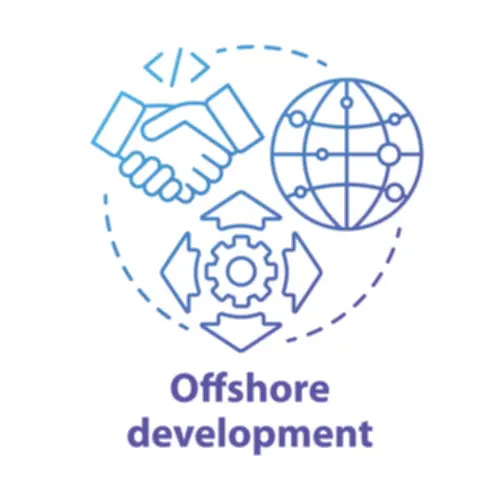This Containerization permits the application to run shortly and reliably from one setting to another containerization definition without the need to set up and configure dependencies separately. Effectively managing containerized functions requires robust instruments, and DigitalOcean provides a complete suite designed to streamline improvement workflows and improve scalability, safety, and efficiency. As you possibly can see, containers and DevOps are often put in the identical field for good purpose. Containers make implementing DevOps easier, and DevOps helps extract the most worth from containers. No one will cease you from packaging a badly designed monolithic software right into a container.
Containers Are For Stateless Purposes Solely
When all of it comes together, containerization software combines a intelligent arrangement of working system features with a container picture format and a runtime engine. It creates transportable, isolated, and resource-efficient environments for purposes to run inside, making developers’ and DevOps’ lives simpler. In figure 1, you see a physical infrastructure that features two digital machines and three containerized functions. Each virtual machine runs on different working systems, whereas the containerized purposes all run on the identical working system. The capacity of containers to run multiple applications on a single physical server, even if the purposes function on completely different operating systems, streamlines infrastructure administration. Overall, containers, microservices and cloud computing have merged, bringing utility improvement and delivery to a brand new stage.
Issues Of Conventional Purposes
Developing and deploying containers increases agility and allows applications to work in cloud environments that best meet business wants. The container runs as an executable file on a container cluster, which may be distributed throughout many machines. If a developer has to kill off a container or a whole cluster or set of clusters as a end result of errors or malicious behavior, many equivalent containers stay. The administrator or developer can turn up many new ones to exchange those who had been terminated.
How Are Containers Totally Different From Virtual Machines?
These applied sciences simplify DevOps workflows and support steady integration and continuous delivery (CI/CD) pipelines for accelerated software improvement. These next-generation approaches have introduced agility, effectivity and reliability to the software program improvement lifecycle, resulting in faster supply of containerized apps and enhancements to customers and the market. Software is the sum of its components, and containerization is the method of bringing an application’s most important pieces collectively into one neatly wrapped package deal. Deciding between containerization and virtualization hinges on your specific requirements. Containerization is good for microservices architectures, cloud-native functions, and environments where server efficiency and fast scaling are priorities. VMs are better fitted to applications requiring full OS isolation, legacy applications not designed for containers, or conditions where the overhead of a full VM isn’t a priority.
Esg Report: Managing Non-human Identities For An Efficient Cybersecurity Program
- This methodology is ideal for organizations trying to modernize their purposes and take full benefit of the cloud.
- If you’ll solely run containerized purposes on your server, you probably can go to the next level and use one of some container-optimized working methods.
- LXC is preferable for situations requiring full Linux system containers quite than simply application containers.
This approach offers robust isolation but at the cost of important overhead because each VM requires its own OS, resulting in elevated resource consumption and slower startup instances. Additionally, this setup demands ongoing upkeep, together with patch administration and system updates, additional adding to the operational burden. For organizations and builders that undertake containerization, it streamlines software growth and deployment, making the process quicker, more dependable, and resource-efficient. Traditionally, when deploying an software, you needed to spin up a server, configure the server accordingly, and set up the application and any dependencies for each surroundings you were rolling the software program out to. Virtual machines (VMs) have been the bedrock of enterprise computing, offering a reliable method to run multiple working methods on a single hardware host whereas providing dependable isolation and security features. Ubiquitous because the early 2000s, organizations continue to make the most of VMs in aspects of IT infrastructure, from information facilities to cloud providers.
Containers in this method are much less related to the person, although the SaaS supplier may use them extensively. The concept of containerization just isn’t entirely new; its roots can be traced again to the early days of computing. However, the greatest way it has developed and integrated into trendy growth workflows marks a big technological advancement.
GitHub helps the company’s long-standing efforts to speed up growth by breaking down communication limitations, shortening suggestions loops, and automating duties wherever attainable. Containers help simplify that complexity through higher standardization and repeatability—and that interprets to a quicker, larger high quality, more efficient SDLC. Check out our offerings for compute, storage, networking, and managed databases.Learn extra about our merchandise. Before we dive into explaining containers within the context of DevOps, let’s first discuss containers themselves.
They play a role in containerized software growth and deployment workflows, offering a centralized resource for managing the various variations of container images. The lightweight nature of containers and their fast start-up occasions make them best for scaling applications. Container orchestration tools like Kubernetes automate the deployment, scaling, and administration of containerized functions, permitting for simple scaling up or down as demand adjustments.
You can even use an agile resolution like Middleware to simplify migrating advanced software architectures to containerized microservices with a no-code automated container. Docker produces the containerized piece that enables builders to package deal functions into containers by way of the command line. These purposes can operate of their respective IT surroundings with out compatibility points. Docker and Kubernetes are in style container technologies, generally compared and selected based on their capabilities.
Effective communication inside containerized functions and with exterior companies requires strong networking solutions. Docker overlay networks and Kubernetes CNI plugins enable flexible and safe network configurations. Both virtualization and containerization improve IT resource management however function at different levels and serve distinct purposes.

It requires proactive measures, ongoing vigilance, and specialised safety instruments designed for containerized environments. Early consideration to container safety, nicely before apps have the prospect to make it to manufacturing environments, can additionally be important. Docker is a contributor to the OCI specs, which specify requirements for the image formats and runtimes that container engines use.
They provide isolated environments for each service, enabling independent scaling, deployment, and administration. Unlike container engines that handle single containers, orchestrators like Kubernetes oversee clusters of containers. They automate deployment, scaling, and networking tasks, guaranteeing environment friendly resource use and excessive availability for containerized purposes. A hypervisor creates digital machines (VMs) on a physical server, every VM containing a whole operating system, purposes, libraries, and hardware stack.

Developers can use Docker information to outline the exact steps to create a container picture. This strategy allows the execution surroundings to be handled as code, enabling it to be version-controlled. Building the same Docker file in the same environment will consistently produce an similar container picture, guaranteeing predictable and repeatable deployments. You’ll now not have one place to read logs from; each container will create its personal logs.

Containerization, on the opposite hand, takes benefit of the host OS, permitting a number of containers to share the same OS kernel while providing isolated runtime environments. Virtualization makes use of a hypervisor, a software layer positioned on a bodily computer or server that permits the physical laptop to separate its operating system and applications from its hardware. Virtualization know-how allows multiple operating techniques and software program purposes to run concurrently and share a single bodily pc or host machine’s sources (for example, CPU, storage and memory). For example, an IT group can run each Windows and Linux or multiple versions of an working system, along with various functions on the identical server.
Transform Your Business With AI Software Development Solutions https://www.globalcloudteam.com/ — be successful, be the first!
